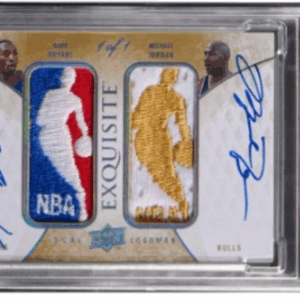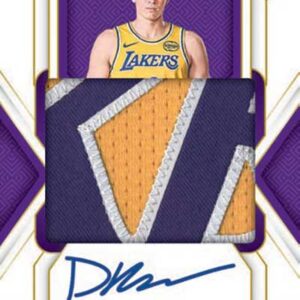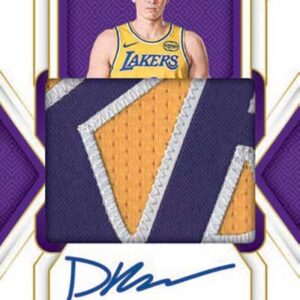The 1991 Hoops Metal Prototypes emerged as a groundbreaking experiment in the realm of basketball trading cards. Featuring the legendary Michael Jordan, these innovative cards blended the thrill of sports collectibles with the bold utilization of metal in card manufacturing. This article takes a deep dive into the production intricacies and the intriguing narrative that surrounds these distinct cards, presenting a firsthand perspective on the fascinating journey from concept to realization.
In a bid to revolutionize the trading card landscape, the creators of the Hoops Metal Prototypes envisioned a one-of-a-kind marketing collaboration with a commonplace product manufacturer: bread. The aim was to explore new market avenues and entice consumers to make purchases, thereby benefiting both Hoops and the bread company. This inventive strategy bore resemblance to Michael Jordan’s later partnerships with Upper Deck and Hanes in 2018, where exclusive cards were bundled with specific product acquisitions.
In this scenario, Hoops intended to disseminate their special metal cards through a strategic alliance with a bread producer, akin to Franz bread’s distribution of cards to endorse the Portland Trail Blazers. While Michael Jordan did not feature directly, his presence loomed over two of these cards: the 1991-92 Terry Porter and the 1991-92 Jerome Kersey cards.
The Production Saga
Crafting metal trading cards in the early ’90s was a groundbreaking concept. The production journey involved a series of intricate stages, encompassing the selection of suitable metal materials, designing cards for enhanced durability and safety, and devising a printing technique that could seamlessly adhere to the metal surfaces without compromising image quality. A firsthand account from a member of the production team sheds light on the arduous yet rewarding process of bringing these innovative cards to fruition.
Initial enthusiasm for the metal cards was palpable; however, challenges soon surfaced. Working with metal posed unforeseen risks, primarily due to the sharp edges of the cards, which posed a potential safety hazard to collectors, especially younger enthusiasts. Mitigating this danger necessitated additional measures in the production process to smoothen edges and render the cards safe for handling.
Distribution and Redemption Strategies
Apart from the bread producer partnership, Hoops explored alternate distribution channels. Plans included inserting redemption cards in packs of Hoops products, offering fortunate buyers the opportunity to swap them for the special metal cards. This dual pronged approach aimed to broaden the reach and engagement with collectors.
Despite the innovative tactics deployed, the metal cards encountered obstacles such as production costs and safety concerns, which curtailed widespread distribution. Consequently, these cards became rare gems highly coveted by collectors in contemporary times.
Legacy and Rarity
The 1991 Hoops Metal Prototypes endure as a testament to the daring and imaginative marketing endeavors of the early ’90s. While the bread producer partnership and redemption schemes may not have yielded long-term success, the cards themselves have morphed into prized relics of collectible history. The fusion of Michael Jordan’s iconic presence with the groundbreaking use of metal renders these cards a captivating chapter in the annals of sports memorabilia.
In essence, the 1991 Hoops Metal Prototypes transcend mere trading cards; they symbolize a narrative of innovation, risk-taking, and the relentless pursuit of extraordinary creations. These cards stand as a symbol of a bold experiment that defied conventions in the realm of trading card production.






